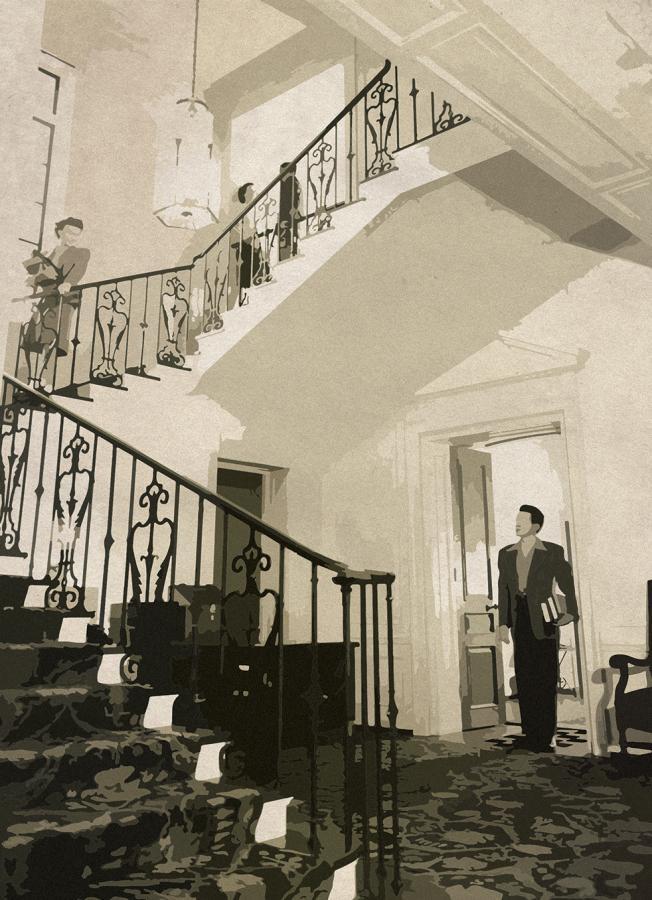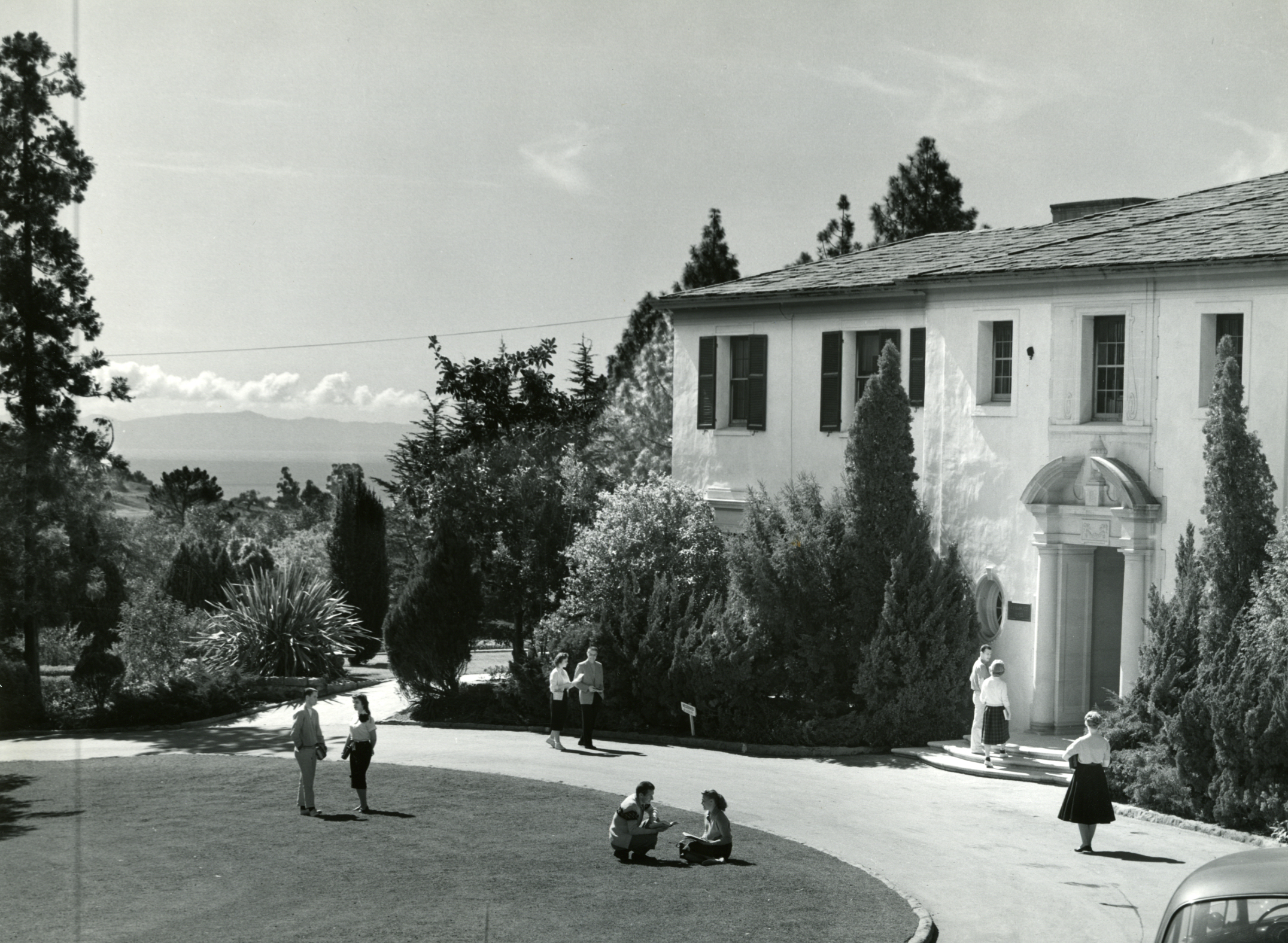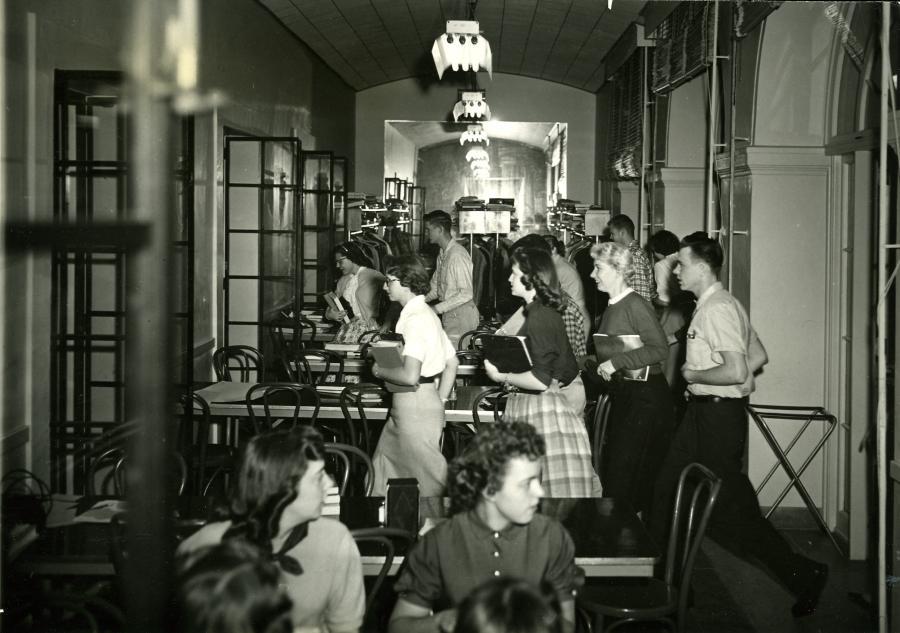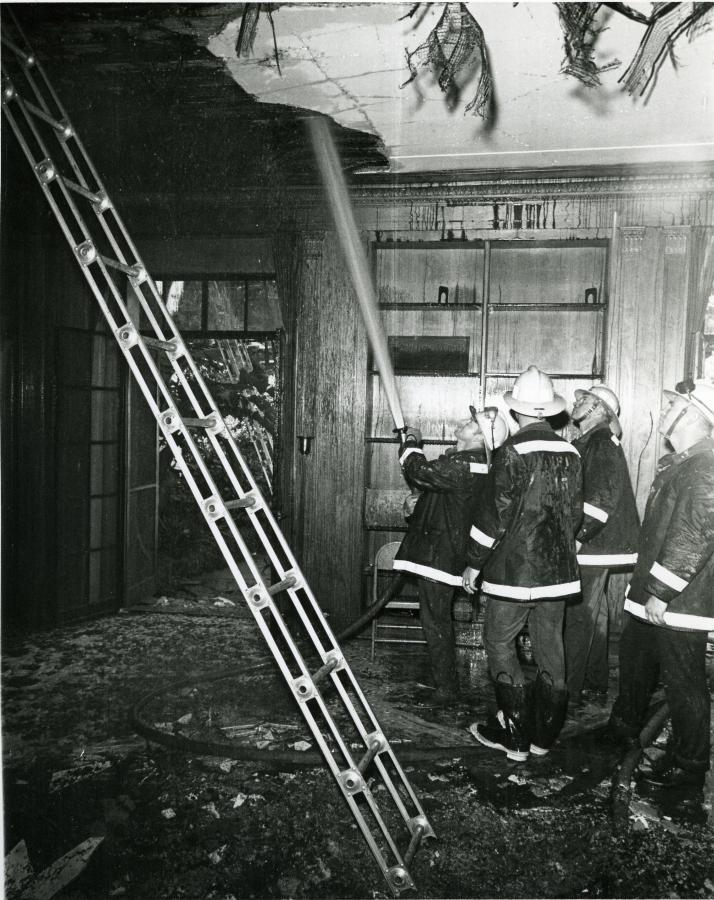Westmont Magazine This Old House
The history of Kerrwood Hall begins 30 years before Westmont’s founding. The campus once belonged to Peter and Jennie Patton Murphy, and they built a grand house on its grounds in 1907.
Peter, who died in 1917, developed a successful business with his railroad inventions. His sixth child, Dwight, worked in the family enterprise and often spent winters with his parents at the home they first named Graystone Terrace and later called El Tejado. After eight years as a widow, Jennie married Robert James Baldwin.
In 1929, Baldwin tore down the deteriorating house and built a second El Tejado, a Mediterranean-style estate designed by Reginald Johnson. When his mother died in 1933, Dwight brought his wife, Grace, and their daughter, Marjorie, there to live.
Elegant and spacious, the house proved ideal for entertaining. Marjorie Murphy Bacon remembered many parties and visits by governors in town for Fiesta (Dwight Murphy served as the
first Fiesta president). The family spent most of their time in the library and the loggia, an enclosed porch with huge windows that overlooked the gardens. A stately dining room and an art gallery exhibiting Baldwin’s carefully chosen collection added to the building’s charm. The L-shaped west wing housed more servants and the kitchen quarters. Two staircases and an elevator connected the floors. In addition to five bedrooms, the upstairs contained a sitting room, dressing rooms, bathrooms, two maids’ rooms, a sewing room and a cedar closet.
Dwight played a key role in Santa Barbara civic life, and wartime gasoline rationing made it difficult to travel to town. A member of the first county planning commission and the longtime director of the city parks commission, he led the effort to restore the mission after the 1925 earthquake. He also owned a large ranch where he bred golden Palomino horses.
The Murphys sold El Tejado to Charles Holland in 1943 and moved downtown. The Hollands may have also found the house inconvenient. According to John Hubbard, a former music professor, Westmont’s field representative, James Denham, knocked on the door in August 1945 and asked if the house were for sale. “How in the world did you know?” Holland asked. “My wife and I have just decided to sell this place.”
Kerr had named the main building in Los Angeles “Kerrwood” after her late husband, Alexander Kerr, and the name moved with the college. Initially, Kerrwood Hall housed most college activities. Students ate in the dining room and the loggia, clearing the tables to study in between meals. The art gallery became the library, which extended down into the basement. The paneled library housed the president in style. Three maids’ rooms in the west wing became the music department classrooms and offices. The college chef lived in an apartment next to the kitchen, which now fed considerably more people.
Upstairs, lockers lined the halls. The bedrooms became classrooms, and some bathrooms and dressing rooms served as offices. Ken Monroe, a professor and administrator, recalled his first office in a former closet. “Whenever anyone closed the door, my light went off,” he said. Students crowded to collect mail at the post office, located at the top of the back stairs.
Once reserved for entertaining, the lounge became a classroom, a concert hall and the location of chapel. “Speakers for chapel stood in the doorway and addressed students sitting in both the lounge and the hall,” Ed Tuggy ’48 explained. “Faculty sat on the stairs, out of sight.” “It seemed that every person addressing chapel made some reference to a split personality or being two-faced,” Art Nelson ’52 said.
Many memories of the lounge focus on music. Maxine Caswell ’50 recalled students singing there, especially the favorite “Great Is Thy Faithfulness.” Art Nelson noted the glory of hearing the Westmont quartet perform in that gracious setting.
Whenever possible, chapel and concerts moved outdoors. Rosella Wilson remembered musical programs on Kerrwood Lawn with a beautiful moon rising in the background.
Spacious as a home, Kerrwood offered cramped quarters for the college. In 1947 the college enclosed a sun deck on the second floor to make three new offices.
President Roger Voskuyl decided in 1953 to extend the building to the south and create a large room for chapel and concerts. Dividers split it up into smaller spaces for classes. For the first time, the entire community could assemble together. The Garden Room, which cost $16,000 and added 2,700 square feet, also provided recreational space and an overflow for the dining room and library. Regrettably, the renovation covered the beautiful arched windows of the old loggia.
A Homecoming go-cart race once began at Kerrwood’s front steps. Students have thrown everything — Jello, goldfish, soap bubbles and engaged men — into the fountain. The children of faculty and staff used to hunt Easter eggs on the lawn.
In the 1960s, new facilities began taking over for Kerrwood. The kitchen and eating areas moved to the dining commons, and chapel migrated to the Page Hall lounge. Then the library moved into the Garden Room and the dining room — and eventually the hallways — until Voskuyl Library opened in 1968.
In March 1970, Westmont nearly lost Kerrwood as a smoldering fire ate through the walls. A short circuit in a cable hidden between the floors started the blaze, which burned undetected for hours. When smoke finally escaped, students, staff and faculty reacted quickly. They grabbed everything in sight and began emptying the building.
People later shared dramatic stories. The development staff got nearly everything out of their office before the ceiling collapsed, just missing them. A student saved Professor Robert Gundry’s newly completed textbook manuscript by throwing the pages out the window. The local media initially reported that students were looting the burning building, then praised them as heroes.
By saving most of the furnishings and important records, the college community limited the loss to structural damage. Thanks to insurance money and gifts, Westmont restored Kerrwood in time for the 1970 fall quarter. The configuration of some rooms changed, and the back stairs disappeared, replaced by a metal, exterior staircase.
Today, Kerrwood serves as the college’s administrative building. The lounge, named for Frank Hieronymus, academic dean and history professor, still hosts lectures and special events. Guests of the college come to Kerrwood for receptions and other activities as the heritage of hospitality continues.



